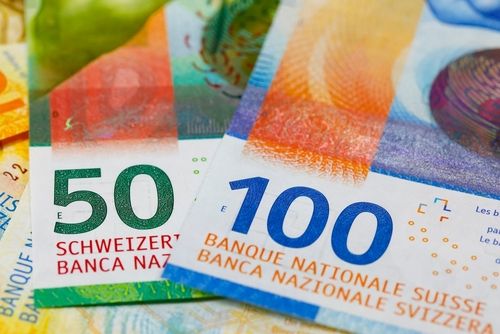USD/CHF breaks below 0.8400, downside appears limited due to dovish SNB policy outlook

USD/CHF could come under pressure amid rising expectations of additional monetary easing by the Swiss National Bank.
The Swiss Franc's safe-haven appeal may weaken as global trade tensions show signs of easing.
Trump said that he is working to improve US access to Chinese markets and characterized US-China relations as "excellent."
The USD/CHF pair continues to lose ground for the second consecutive day, trading near 0.8390 during Wednesday’s Asian session. Downside risks appear limited, as growing expectations of further monetary easing by the Swiss National Bank (SNB) weaken the Swiss Franc (CHF).
Last week, SNB Chairman Martin Schlegel reaffirmed the central bank’s readiness to intervene in the currency market and potentially cut interest rates—even into negative territory—should inflation persistently fall short of its target.
Meanwhile, the safe-haven appeal of the Swiss Franc may face headwinds due to easing global trade tensions. Reports suggest the US and China have reached a preliminary agreement to significantly scale back tariffs. Under the proposed deal, US tariffs on Chinese goods would be reduced from 145% to 30%, while China would lower tariffs on US imports from 125% to 10%. The move is widely viewed as a constructive step toward de-escalating trade friction between the two nations.
Adding to the optimism, US President Donald Trump told Fox News that the US is working to broaden access to Chinese markets and described bilateral relations with China as “excellent.” He also expressed openness to direct talks with President Xi Jinping in pursuit of a comprehensive trade agreement.
On the other hand, recent weakness in the US Dollar (USD) has contributed to USD/CHF’s volatility. The Greenback came under pressure after US inflation data came in softer than expected. Market focus now turns to key upcoming US data releases, including the Producer Price Index (PPI) and the University of Michigan’s Consumer Sentiment Survey, both scheduled for later this week.
April’s US Consumer Price Index (CPI) rose 2.3% year-over-year, slightly below March’s 2.4% increase and market expectations. Core CPI, which excludes food and energy, advanced 2.8% annually, matching both the prior month and consensus estimates. On a monthly basis, both headline and core CPI posted a 0.2% gain.
* The content presented above, whether from a third party or not, is considered as general advice only. This article should not be construed as containing investment advice, investment recommendations, an offer of or solicitation for any transactions in financial instruments.


